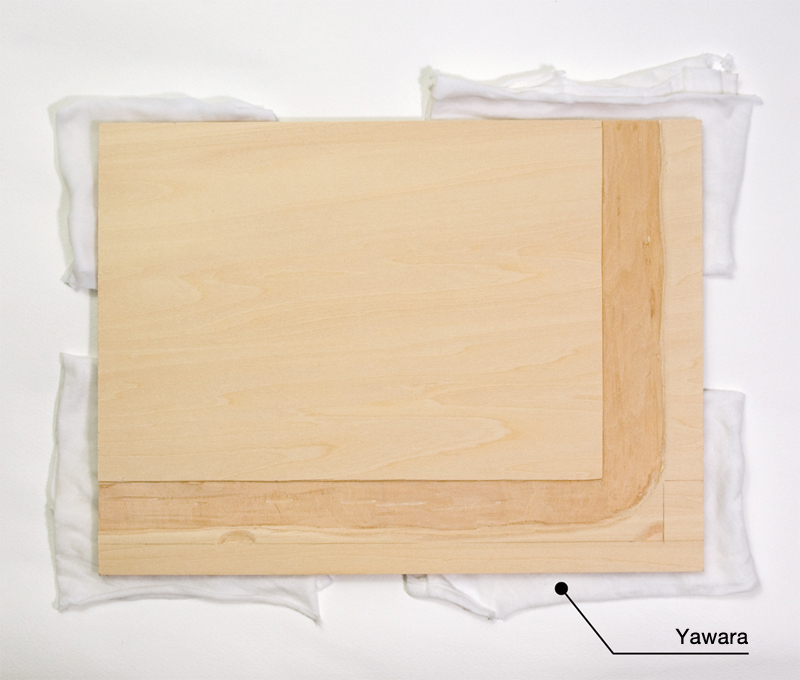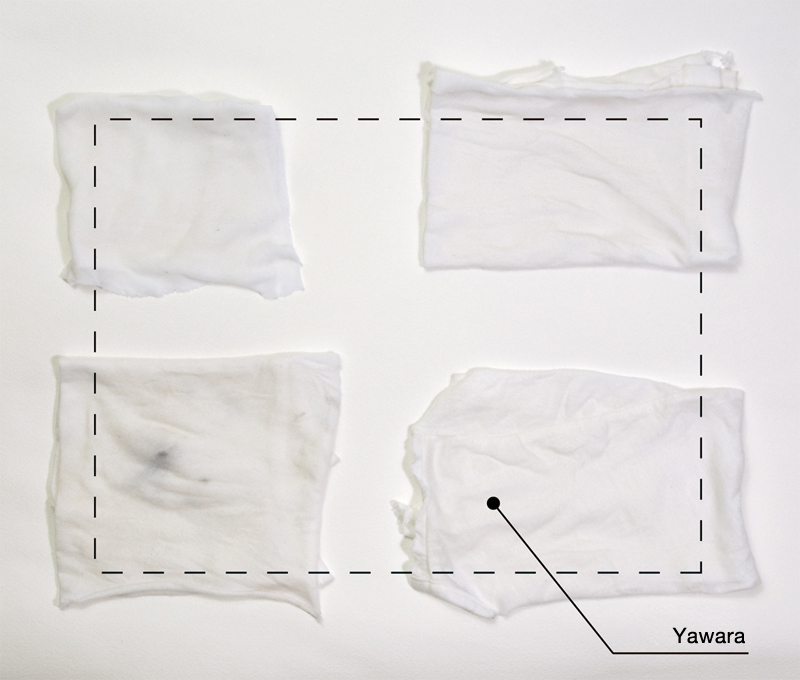Yawara
やわら
Yawara
CATEGORIES
Damp rags (or uesu) called yawara are used in woodcut printing. Yawara are laid beneath a woodblock to prevent shifting when a printmaker burnishes paper against the woodblock.
In woodcut printing, the printmaker applies a considerable amount of force to the woodblock during the burnishing process, particularly when applying paint with a brush and firmly rubbing the woodblock from the top with a baren over the paper. The printmaker must thus use yawara to prevent the woodblock from moving during these tasks. Yawara are approximately 20cm-square uesu, cut from knitted fabric, that are moistened and folded into quarters. The printmaker then lays them beneath the four corners of a woodblock.
This allows the printmaker to work on a woodblock and apply pressure for burnishing the print without the woodblock moving around. The yawara also protect the woodcut on the back side of the woodblock from damage. Note, however, that if the yawara are too thick, they will form a gap between the woodblock and work table. This can create elasticity in downward force, decreasing the effectiveness of the baren, and may cause the woodblock to warp during the burnishing process. For large woodblocks, the printmaker usually makes larger yawara appropriate for the size of the woodblock. When burnishing sotokento, note that when you lay yawara beneath the woodblock, the woodblock will differ slightly in thickness than the kentoban. Be mindful of this when you set paper into the kentō block.
You can substitute other items for uesu as your yawara. When using newspaper, dampen it evenly and then fold it into a yawara. You can make yawara out of larger rags by spreading them out beneath the woodblock and also use paper towels as you would use uesu. Printmakers now use non-slip PVC mats, as well.


